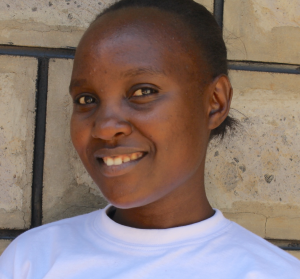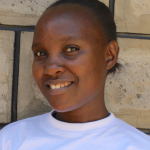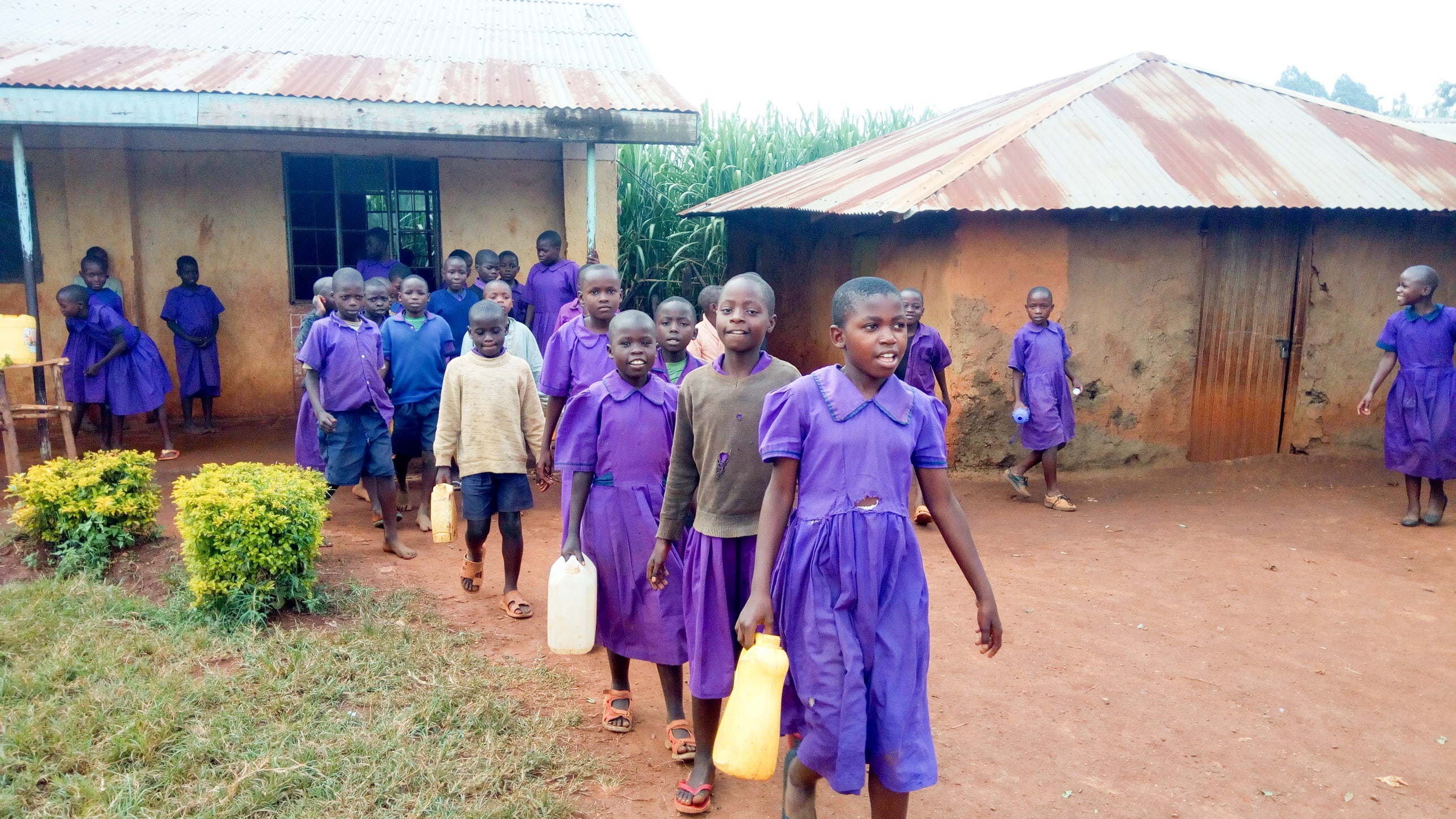We went to Munyanza Primary School on a cloudy afternoon but after arriving, the clouds started clearing up and we were grateful not to rush around for fear of rain.
Munyanza Primary School was started in 2008 as a Church of God sponsorship to promote education in the area. The school is built on overseer Ajioni's piece of land, but he recently refused to give more land for the school's expansion. It was just in 2017 that the school had their first national exams candidates who performed very well.
The school has two compounds. One of the sections is shared with the church and holds the lower primary pupils are squeezed in there. On that same tiny piece of land is the school assembly ground, a kitchen, and toilets that belong to the church. The other compound has three complete classrooms and two others under construction.
But there's no water to be found on school grounds. These 344 students must carry water to school each morning. To avoid having to carry a heavy water container all the way from home, students admit to filling their containers along the dirt road. There are puddles for a few days each time it rains, and there is an unprotected spring by a large rock.
The students leave their 3 to 5-liter containers on the ground outside of the classrooms. The water was visibly dirty and mishandled by the students. Most of it was turbid and would require a water filter to make it clear and clean. Drinking water in Munyanza Primary School is a health hazard.
Deputy Headteacher John Mangala said, "The students use very dirty containers to fetch water and sometimes we spot visible parasites in the water. This is the same water that is used to cook meals for us."
"I have just suffered from diarrhea within the past few weeks because I washed my mango using water from the school's kitchen."
What we can do:
Training
"The hygiene situation in this school is very wanting. In as much the pupils are practicing handwashing, they use dirty water without soap. They also do not know how to use the sanitation facilities and this exposes them to germs and infections,' said Mr. Mangala.
"We are eagerly waiting for you to come and teach our children on water handling, proper hygiene, and sanitation."
Training on good hygiene habits will be held for two days. The facilitator will use PHAST (participatory hygiene and sanitation transformation), ABCD (asset-based community development), CTC (child to child), lectures, group discussions, and handouts to teach health topics and ways to promote good practices within the school. The CTC method will prepare students to lead other students into healthy habits, as well as kickstart a CTC club for the school.
Handwashing Stations
We will deliver two handwashing stations to the school, and the club will fill them with water on a daily basis and make sure there is always a cleaning agent such as soap or ash.
VIP Latrines
Four of the latrines students share with the church stink and large flies buzzed around us as we opened the doors. The floors are worn out and there is a danger of students falling through to the pit.
Two triple-door latrines will be constructed with local materials that the school will help gather. Three doors will serve the girls while the other three serve the boys. And with a new source of water on school grounds, students and staff should have enough to keep these new latrines clean.
Rainwater Catchment Tank
A 50,000-liter rainwater catchment tank will help alleviate the water crisis at this school. The school will also help gather the needed materials such as sand, rocks, and water for mixing cement. Once finished, this tank can begin catching rainfall that will be used by the school’s students and staff.
We and the school strongly believe that with this assistance, standards will significantly improve. These higher standards will translate to better academic performance!

 Rainwater Catchment
Rainwater Catchment
 Rehabilitation Project
Rehabilitation Project































